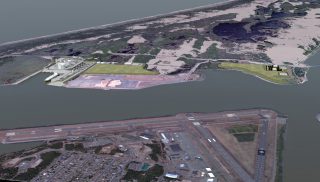The Oregon Department of Environmental Quality and the U.S. Army Corps of Engineers have called for public comments on the Jordan Cove Energy project proposed for the North Spit of Coos Bay near North Bend.
The project includes a liquefied natural gas export facility and a connecting roughly 230-mile pipeline near Malin that would cross Klamath, Jackson, Douglas and Coos counties.
The facility would be able to handle up to 7.8 million tons of liquefied natural gas each year and be capable of receiving and loading ocean-going carriers exporting the liquefied natural gas.
The project would also involve dredging four areas abutting the Coos Bay channel and placing dredged material in four locations. The connecting Pacific Connector project would include installing a 36-inch diameter welded steel gas pipe and a compressor station near Malin. Construction in wetlands and waterways would include trenching, blasting, fluming, damming and pumping, horizontal directional drilling and other methods.
The liquefied natural gas facility would affect waterways and wetlands on the North Spit, in Coos Bay, at dredge disposal sites, and at the Kentuck Slough golf course mitigation site. The Pacific Connector project would affect waterways and wetlands in Klamath, Jackson, Douglas and Coos counties, a statement by the Oregon Department of Environmental Quality reads.
The applicant has provided mitigation plans to offset impacts on affected wetlands and waterways. The plan includes enhancing the former Kentuck golf course and abutting land near North Bend and creating an eelgrass bed in Coos Bay southwest of the current Southwest Oregon Regional Airport runway in North Bend.
DEQ noted the public comment period closes on July 21, after which the authority will review all the comments and request additional information if necessary, all towards issuing a final certification document.
The United States Coast Guard recently concluded its review of the project’s waterway suitability, recommending to the Federal Energy Regulatory Commission (FERC) that the waterway in its current state be considered suitable for LNG marine traffic associated with this project.


